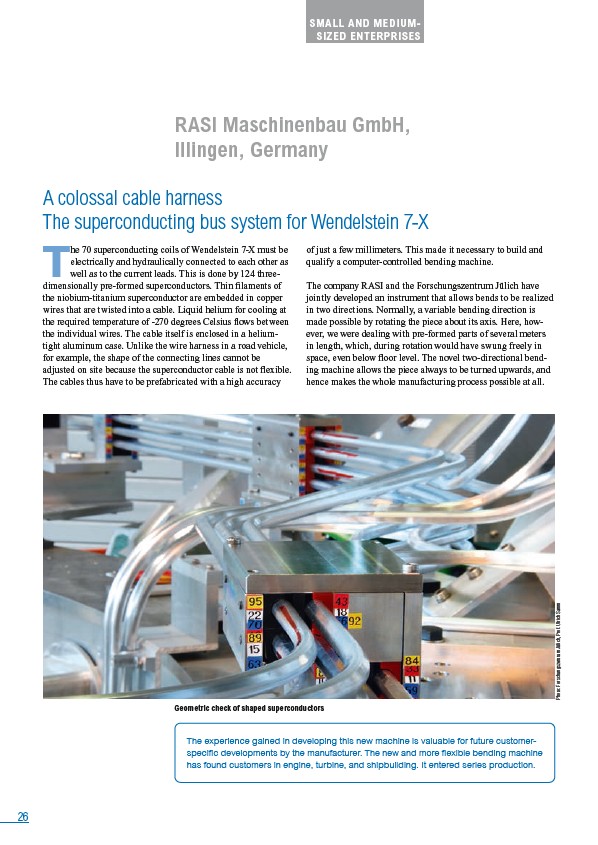
26
RASI Maschinenbau GmbH,
Illingen, Germany
A colossal cable harness
The superconducting bus system for Wendelstein 7-X
The 70 superconducting coils of Wendelstein 7-X must be
electrically and hydraulically connected to each other as
well as to the current leads. This is done by 124 threedimensionally
pre-formed superconductors. Thin filaments of
the niobium-titanium superconductor are embedded in copper
wires that are twisted into a cable. Liquid helium for cooling at
the required temperature of -270 degrees Celsius flows between
the individual wires. The cable itself is enclosed in a heliumtight
aluminum case. Unlike the wire harness in a road vehicle,
for example, the shape of the connecting lines cannot be
adjusted on site because the superconductor cable is not flexible.
The cables thus have to be prefabricated with a high accuracy
of just a few millimeters. This made it necessary to build and
qualify a computer-controlled bending machine.
The company RASI and the Forschungszentrum Jülich have
jointly developed an instrument that allows bends to be realized
in two directions. Normally, a variable bending direction is
made possible by rotating the piece about its axis. Here, however,
we were dealing with pre-formed parts of several meters
in length, which, during rotation would have swung freely in
space, even below floor level. The novel two-directional bending
machine allows the piece always to be turned upwards, and
hence makes the whole manufacturing process possible at all.
Geometric check of shaped superconductors
The experience gained in developing this new machine is valuable for future customer-
specific developments by the manufacturer. The new and more flexible bending machine
has found customers in engine, turbine, and shipbuilding. It entered series production.
Photo: Forschungszentrum Jülich, Prof. Ulrich Samm
SMALL AND MEDIUM-
SIZED ENTERPRISES